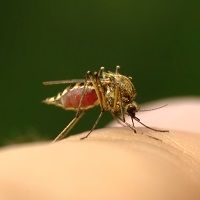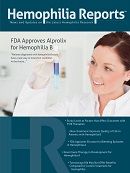Case Study: Dengue Fever and Hemophilia A
Chronicling the treatment of a hemophilia A patient with dengue fever.

Hemophilia A patients with comorbid dengue fever exhibit bleeding from earlier stages and at higher platelet levels than patients with dengue alone, according to a case study published in BMC Research Notes.
Researchers from Sri Lanka tracked a 16-year-old male Sinhalese patient with severe hemophilia A and dengue fever in order to shed light on the comorbid diseases. The researchers noted that dengue is the most rapidly spreading mosquito borne viral disease in the world, and that there is little literature about dengue patients with hemophilia A, the most common inherited bleeding disorder. The details of his managed care at a tertiary care hospital were presented by the study authors.
On Day 1, the patient was admitted to the hospital with acute febrile illness, which was associated with arthralgia, myalgia, vomiting, and headache. The patient had a tachycardia of 120 bpm, and a blood pressure of 110/70 mm Hg. He had no bleeding manifestations. The patient’s baseline leukocyte and platelet counts were 4400 and 241,000 per cubic millimeter, respectively, with a hematocrit of 34.5 percent.
The healthcare providers confirmed dengue fever using a sero conversion of the dengue IgM antibody test. The caregivers monitored the patient’s fluid balance, pulse rate, and blood pressure hourly, while the hematocrit and platelet counts were checked 3 times per day. He was clinically assessed for bleeding.
On Day 3, the patient developed bleeding from a tooth extraction site and was vomiting dark red blood. At that point, his platelet count was 124,000 per cubic millimeter and the hematocrit count was 32 percent. He was administered factor VIII (FVIII) intravenously to achieve 100 percent factor correction over 24 hours. Then, his platelet count dropped progressively, the researchers said, from admission to an all time low of 50,000 per cubic millimeter by Day 6.
The patient did not develop any clinical evidence of fluid leakage, the health care providers reported. On Day 7, the patient was discharged following a complete recovery.
“People with hemophilia who develop dengue virus infections may exhibit bleeding manifestations from the early febrile stage and at higher platelet levels, compared to the pattern observed in most non hemophiliac patients with dengue fever,” the authors wrote. “In dengue endemic areas it is advisable that patients with bleeding disorders such as hemophilia seek early medical help in the event of an acute fever.”
The researchers believe that the observed pattern of patients with dengue and hemophilia A bleeding earlier with higher platelet levels may stem possibly from the lack of FVIII and/ or aggravation of bleeding risk due to the vasculopathy in dengue. In the example of the current patient, they wrote, where the dengue was non severe, the recent dental surgical procedure increased his risk for bleeding.
“Considering the higher risk of bleeding, and the chance that bleeding may occur earlier on in disease than in non hemophiliacs, closer clinical and hematological monitoring may be required than is recommended for non hemophiliacs,” the authors concluded.
